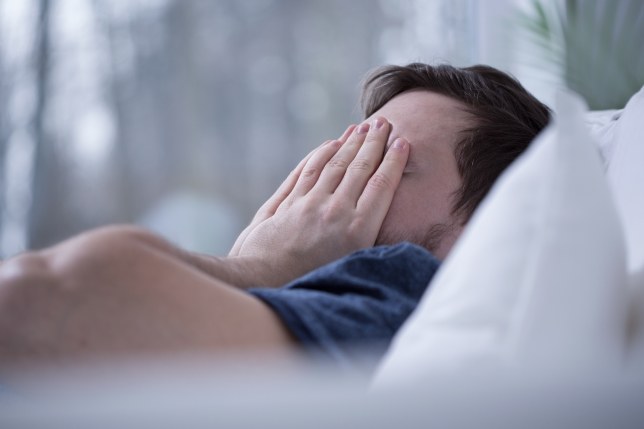Well, here we are at the last post in the series! For a quick recap, we first talked about what obstructive sleep apnea (OSA) is and how it is diagnosed. Then, we talked about non-surgical treatments including CPAP, oral appliances, and lifestyle changes. Finally, we discussed various traditional surgeries designed to treat OSA.
Main Sleep Apnea Treatment – Radiofrequency Ablation (RFA)
Now, we come to the final post, in which I’ll discuss office procedures to treat OSA. The main procedure I’ll talk about is radiofrequency ablation (RFA) of the base of tongue.
Radiofrequency ablation is a tool which has been used for this purpose for the last 10-15 years. For most of that time, it was mainly used in the operating room under anesthesia and frequently in conjunction with other sleep surgeries such as UPPP.
Radiofrequency energy is the same type of energy used in microwave ovens. It is transmitted into the tissue using a thin needle-shaped probe.
In the past, the RFA treatment was generally given only once at a fairly high dose. This way of doing things led to promising but overall mixed results. In addition, there was a substantial amount of post-procedure pain and a fairly high rate of complications including excessive swelling, hematoma (bleeding inside the tongue tissue), postoperative infection/abscess, and change in voice and taste.
Another practical problem was that until 2009, there was no CPT procedure code for radiofrequency ablation of the tongue, so getting paid anything for the procedure was a difficult task (for American docs at least). At present (May 2014), Medicare and United Healthcare cover the RFA procedure but I would expect more insurance companies will join them in the next few years.
For these reasons, RFA of the tongue base has not caught on in the practices of most ENT doctors thus far.
However, some pioneering doctors have experimented with the procedure and have produced some very promising results.
New Research on RFA
The basic idea of the new research is that instead of 1 RFA treatment at a high dose, patients get between 4 and 8 treatments in the office at a much lower power setting (about 25-30% of the old way). These treatments are spaced out once a month over a 4-8 month period.
This new protocol provides several key benefits. First, the procedure is tolerated easily in the office and the recovery afterward is significantly better than most other sleep apnea surgeries. Second, the rate of complications is much lower: the risk of hematoma, abscess, and speech problems are all much less than 1%. And finally, the patient ends up getting a higher total amount of radiofrequency energy after adding up all the treatments, but with plenty of time for healing in between treatments.
A bit more detail about the recovery after the procedure: after the first treatment, I have found that my patients usually have a moderate level of pain for about a week but sometimes up to 10 days. The throat feels sore and swollen, and many patients eat a soft diet for several days. For the second procedure and onward in the series of treatments, the recovery is generally much easier- only a mild sore throat.
Who should get the procedure? Appropriate patients for the procedure should have BOTH 1. Documented obstructive sleep apnea using or previously tried CPAP and 2. Visible evidence of airway narrowing behind the base of tongue on office endoscopic exam (about 75% of all OSA patients have this).
Results of the Sleep Apnea Treatment
But what are the results? Does the procedure actually cure sleep apnea? Here are the results for mild, moderate, and severe OSA patients (with cure defined as an AHI of <5 and oxygen saturations remaining >90% during the post-procedure sleep study)
- Mild OSA patients (AHI 5 to 15): Of 300 patients, 61% were cured
- Moderate OSA patients (AHI 16-30): Of 178 patients, 47% were cured
- Severe OSA patients (AHI >30): Of 153 patients, 31% were cured
So, when we define “cure” by objective data points, roughly 2 out 3 mild OSA patients will be cured with the series of RFA treatments, about half of moderate OSA patients will be cured, and about a third of severe OSA patients will be cured.
When we expand the definition of “cured” to include patients who no longer need CPAP, the percentages will get even better (more studies need to be done though). Patients who get close to normal AHI values with minimal oxygen desaturations can still frequently get off CPAP, especially when they have no abnormal heart rhythms while asleep. I will always consult with the patient’s sleep medicine physician before telling borderline patients whether to stop their CPAP.
If we add in the option of an oral appliance, even more of these patients will improve to normal sleep patterns and will be able to get off their CPAP machine.
In conclusion, I am very excited and optimistic about the RFA procedure in the office for treatment of sleep apnea. Like all other sleep apnea surgeries, it is not perfect and not appropriate for all patients. However, it’s convenience, substantially lower morbidity and side effects, and focus on the most likely anatomic problem in OSA make it a great addition to our arsenal. I am happy to now offer this treatment to appropriate patients in my practice.
Call us for more information 512 550 0321 or learn more about Sleep Apnea Treatments.

